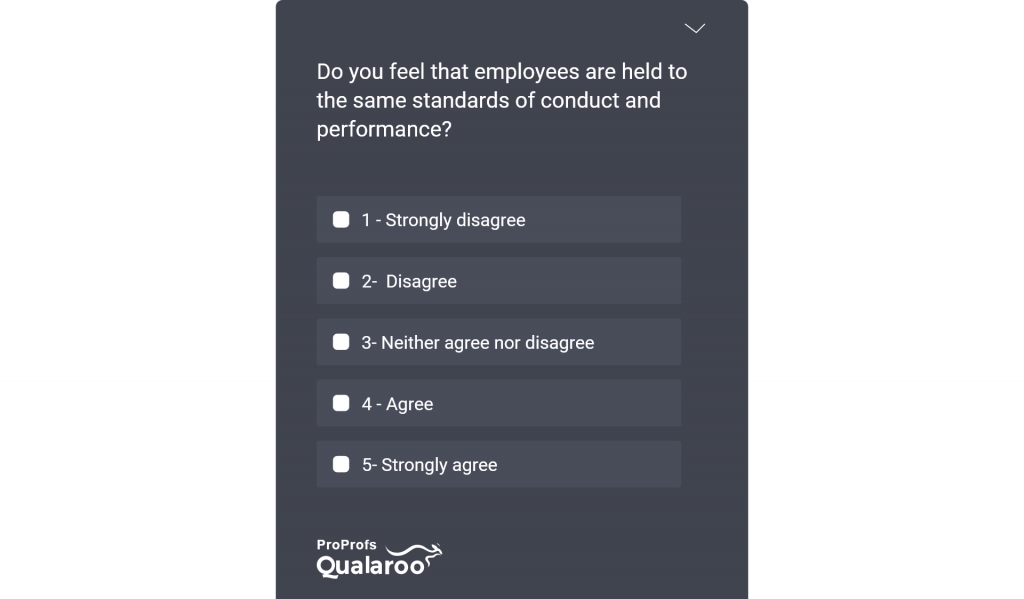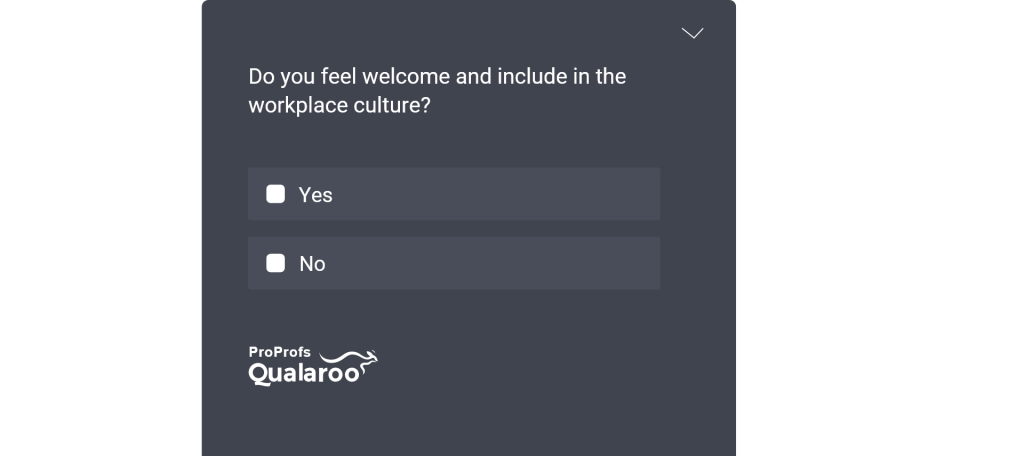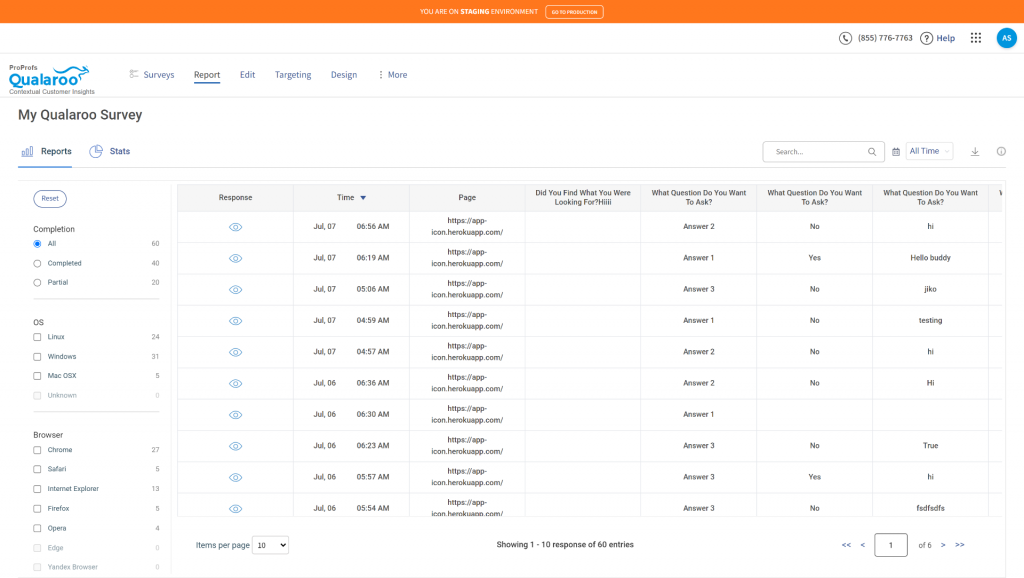“When we discovered a gender wage discrepancy in our firm, we launched a successful DEI survey project. We restructured our compensation rules immediately to provide equitable pay for all employees. This not only fixed the problem but also improved business culture by displaying our dedication to justice.”
This was the experience of Isaac Robertson, co-founder of Total Shape.
Organizations across industries share a similar feeling about diversity, equity, and inclusion surveys or DEI surveys.
DEI is the cornerstone of a thriving, innovative, and ethical workplace. It boosts creativity, attracts great employees, and ensures everyone feels valued.
With a DEI survey, you not only get insights into your workforce but also pave the way for a more welcoming environment and create a sense of belonging for your employees.
In this blog, we’ll take you on a journey to understand DEI surveys. We’ll show you why they matter, how they work, and how to use them effectively. You will also find 25+ effective DEI survey questions that you can use to get started.
What Is a Diversity, Equity, and Inclusion Survey?
A diversity, equity, and inclusion survey is a structured questionnaire designed to assess how effectively organizations are embracing diversity, fostering equity, and promoting inclusivity.
With 56% of workers believing that focusing on increasing diversity, equity, and inclusion at work is a good thing, DEI surveys can be a strategic tool to help you create a more inclusive workplace.
DEI surveys are essential for understanding the experiences and perceptions of employees.
However, they are more than just a simple diagnostic tool. By collecting honest and anonymized employee feedback, you can discover areas of strength and those in need of progress.
For more on DEI, you can take up this detailed course.
25+ DEI Survey Questions
We have compiled a list of questions that are designed to provide a comprehensive view of an organization’s DEI landscape.
Diversity Survey Questions
Diversity pertains to the mixture of different identities and experiences among employees that contribute to innovation. Use these diversity questions in your surveys:
- Do you feel our organization embraces and supports a diverse workforce?
- Have you witnessed discrimination based on the following grounds in our workplace? A. Race, B. Gender, C. Others.
- Are there diverse role models within the organization that you can look up to?
- Do you agree with this statement: The company is committed to hiring a diverse workforce?
- Do you feel the company values your unique background, skills, and perspectives?
- How would you describe the diversity within your immediate team?
- Have you ever experienced or witnessed discrimination based on your: A. Background, B. Gender, C. Ethnicity?
- Are there clear opportunities for career advancement for employees from diverse backgrounds?
- Is there representation of diverse perspectives and cultures in decision-making processes?
Equity Survey Questions
Equity concerns itself with providing everyone access to opportunities and resources, ensuring fairness and equal treatment amongst employees. Here are some equity questions you can refer to:
- Are you satisfied with the fairness of promotion opportunities within the company?
- Do you feel that all employees are held to the same standards of conduct and performance?

- Have you encountered disparities in pay and benefits based on gender, race, or other characteristics?
- How would you rate the company’s efforts to accommodate employees with disabilities?
- Is there a clear procedure for reporting and addressing discrimination or bias in the workplace?
- Do you think our organization accommodates differences in employee backgrounds and needs effectively?
- Are opportunities for growth offered equitably?
- How do you perceive our organization’s policies regarding compensation and other benefits?
- Have you ever experienced unrecognized biases while being appraised or recognized?
Inclusion Survey Questions
Inclusion involves creating a work environment where everyone feels engaged, valued, and supported. Some of the most effective inclusion questions to include in your surveys are:
- Do you feel comfortable sharing your opinions and ideas in team meetings and discussions?
- Have you noticed any inclusive practices, such as diversity training in the workplace?
- Are there visible role models in leadership positions who come from diverse backgrounds?
- How often do you participate in events or activities that promote inclusivity and diversity?
- Have you observed the presence of microaggressions in your workplace?
- Do you feel welcome and included in the workplace culture?

- Are employees with diverse backgrounds encouraged to voice their opinions and ideas?
- Do managers hold regular discussions on team inclusivity and collaboration?
- Are there opportunities for employees to learn about diverse cultural experiences in the workplace?
- Does the workplace have an effective system to address discrimination or harassment complaints?
Why DEI Surveys Matter?
A mere 30% of employees strongly agree that they are treated fairly at the workplace.
So, while most businesses are trying to make changes to improve DEI, a very small fraction is seeing positive results.
Effective DEI surveys can help identify the cause of this gap.
These surveys are more than a tick-box exercise; they ensure your business is innovatively diverse, mentally engaged, reputationally strong, cognitively comprehensive, and financially competitive.
Here’s what Gauri Manglik, CEO of Instrumentl had to say about the importance of DEI surveys:
| “Diversity and inclusion surveys are important because they force us to be honest with ourselves. We can’t just think we’re doing well, or that we’re perfect—instead, we have to look at the hard data and see where we are failing.” |
Following are some ways how these surveys drive change in the company culture –
Enhancing Innovation
Teams with diverse backgrounds can offer a multitude of perspectives, thus aiding in problem-solving and driving innovation.
According to McKinsey –
“Companies in the top quartile for gender diversity on their executive teams were more likely than less-diverse peers to have above-average profitability.”
Measuring Progress
Diversity questionnaires offer an empirical method to track the impact of DEI initiatives over time. They aid in measuring whether diversity and inclusion targets are met, and equity is achieved.
Boosting Brand Reputation
Conducting diversity and inclusion surveys and acting on their results demonstrates an organization’s commitment and values. This bolsters its brand reputation, helps attract top talent, and can even influence consumer decisions.
Monitoring Employee Well-being
These surveys help identify areas of concern and dissatisfaction, enabling organizations to take action to improve the well-being of their employees.
Also Read: Employee Satisfaction Surveys: A Complete Guide To Boost Turnover
Legal Compliance
They aid in ensuring organizations comply with anti-discrimination laws and regulations.
Improved Decision-Making
Data-driven insights from DEI surveys enable organizations to make informed decisions, leading to more effective strategies for diversity and inclusion.
Enhance the Sense of Belonging
| “Diversity is being invited to the party, inclusion is being asked to dance.” – Verna Myers |
DEI surveys can help encourage a sense of belonging among employees. This nurtures their motivation and commitment, contributing to the overall cohesion of the team.
Leveraging DEI Surveys: 7 Best Practices
According to a report by PwC, only 4% of organizations are successful in their DEI efforts.
So, what does it take to conduct successful surveys?
Getting the most out of DEI surveys boils down to thoughtful planning, execution, and follow-up. Here are some best practices to elevate your survey process.
1. Use the Right Software
Use intuitive online experience and feedback tools like Qualaroo to administer your DEI surveys. This can help you-
- Send DEI surveys on email using link surveys.
- Leverage AI-powered sentiment analysis to interpret free-form text responses and identify the emotions in the feedback. The word cloud also helps visualize the main ideas presented by the respondents. Here’s a sample of Qualaroo’s word cloud:
- Use customizable nudges to design a survey that best fits your DEI goals.
- Allow employees to skip the questions or present them with relevant follow-up questions with the help of skip and branching functionality.
2. Make Your Questions Count
Keep your questions concise and unambiguous. Design concise and clear questions that aim to extract meaningful insights about your organization’s DEI initiatives.
Balance your survey with multiple-choice, rating scale, and open-ended questions to give employees various ways to express their perspectives.
Also, avoid leading and double-barreled questions that can confuse respondents or bias their responses. Here’s an example:
The wrong way:
“Do you agree that our product is best in quality and price?”
The right way (Split into two questions):
Question 1: “How would you rate the quality of our product?”
Question 2: “How would you rate the price of our product?”
| You might also like to read: Employee Retention Survey Questions to Ask |
3. Assure Anonymity & Confidentiality
Confidentiality is a crucial factor in gathering genuine feedback. Employees should feel comfortable providing honest feedback without worrying about any potential repercussions.
Assuring anonymity and making sure to uphold it can increase the response rate and the accuracy of your DEI survey.
Here’s a related read: 10 Best Anonymous Feedback Tools to Collect Unbiased Insights
4. Invest in Cross-Functional Involvement
Involve the senior management in the survey process, but remember to also take a cross-functional approach. Garnering support and involving personnel from diverse roles can help ensure the survey is comprehensive and touches upon multiple perspectives across the organization.
5. Administer Regularly
Regular administration of DEI surveys—annually or bi-annually—can track your organization’s progress over time. Consistency can also create a culture of continuous feedback and improvement, signaling to employees that the company values their perspectives in driving DEI changes.
Pre-built templates can help you create surveys quickly, ensuring that you are able to administer surveys regularly.
6. Prioritize Follow-Up Action
Conducting a DEI survey is a great start, but what truly drives change is action. Analyze the data you gather and follow up with concrete plans to address any gaps.
It’s also crucial to communicate these actions back to your employees, emphasizing your organization’s commitment to DEI. Use the data strategically to take action wherever needed.

7. Encourage Participation
Communicate the value and purpose of the DEI survey to your team. Emphasizing the importance of their feedback in shaping workplace policies can encourage a higher response rate.
By keeping these best practices in mind, you can ensure your DEI surveys are effectively structured and conducted, yielding valuable insights that can help you build a truly diverse, equitable, and inclusive environment.
FREE. All Features. FOREVER!
Try our Forever FREE account with all premium features!
Drive Tangible Results With DEI Surveys
Diversity, equity, and inclusion aren’t just buzzwords— they help you navigate the path to business success.
With the global market for Diversity and Inclusion projected to reach $15.4 Billion by 2026, investing in DEI surveys isn’t optional— it’s imperative!
By consistently collecting, analyzing, and acting on feedback, organizations can create environments where every individual feels valued, respected, and empowered. This ultimately fosters a stronger and more successful workforce.
If you want to embark on this transformative journey, a powerful tool like Qualaroo can help you get started. Use pre-built templates, ensure anonymity, and create an engaging survey experience to harness the true power of employee feedback!
FREE. All Features. FOREVER!
Try our Forever FREE account with all premium features!

 We'd love your feedback!
We'd love your feedback! Thanks for your feedback!
Thanks for your feedback!

